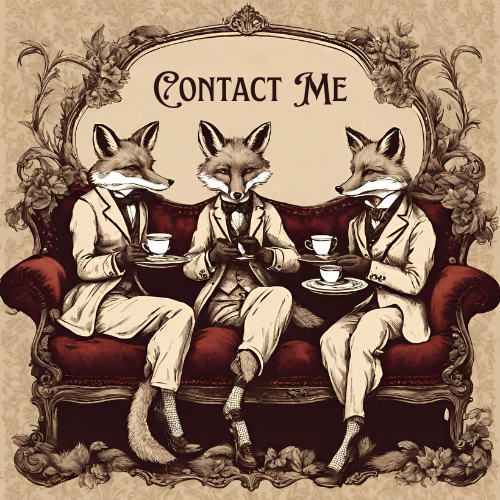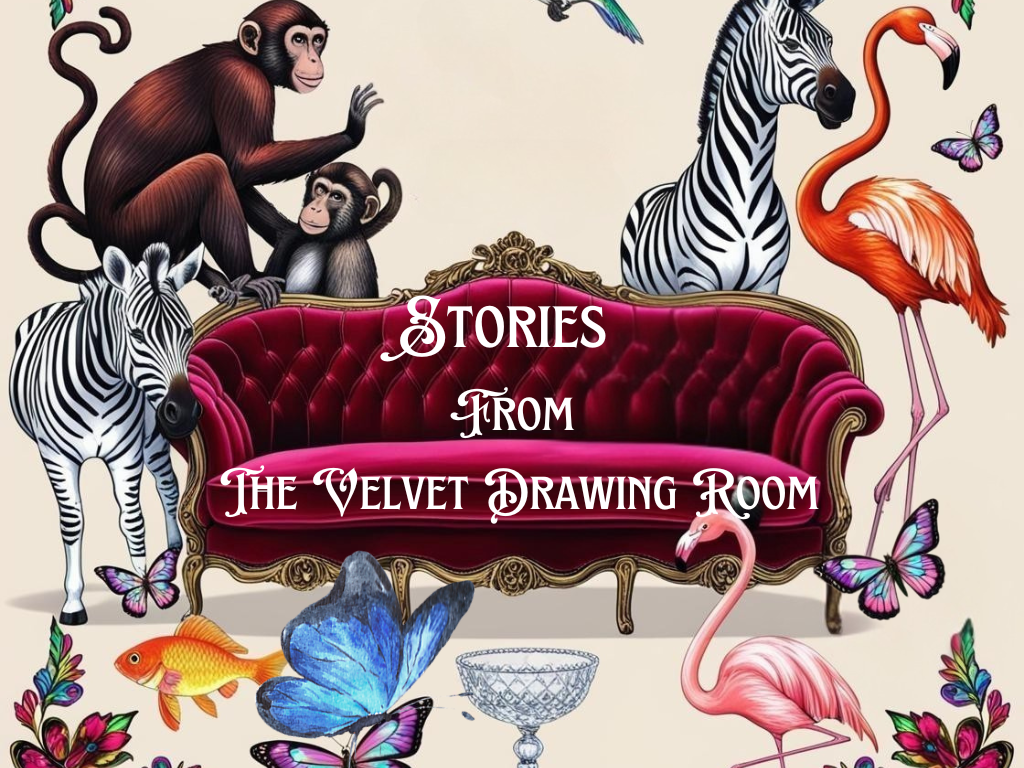THE MENAGERIE

The Early Menagerie
The menagerie was born in Roman times, but historically only wealthy or titled people had the means to keep animals for pleasure. These menageries served as status symbols and denoted power and excess. Henry 1st in 1110 created the first menagerie zoo in England at his palace in Oxfordshire which contained lions, tigers and bears – a throwback to the Roman Empire – but at that time it was only for the eyes of nobility.
Seven hundred years later, by the early 1800s in Britain, a public fascination for the menagerie developed, spurred on by the arrival of even more exotic animals. These were coming into the docks in places like London, Belfast and Liverpool. These animals were pouring in from trips made by the elites to far-flung places. They were being sold to dealers like Jamrach and Cross and gentlemen collectors who were taking advantage of new economic opportunities, including the introduction of travelling menageries.

Hamlyn’s Menagerie Magazine dated 1919 is a fascinating insight into the range and extent of the animal menagerie industry. Download it here. Copyright free.

THE TRAVELLING MENAGERIE
Travelling menageries, set up by the likes of Polito, Wombwell, Bostock and Cross featured animals ranging from elephants and lions to monkeys and birds, and they drew big crowds. People were keen to see all these new wonders of the natural world and going to see a Menagerie show was a distinct form of entertainment, just like in Roman times.
By the early Victorian times in the mid-1800s all social classes now had the opportunity to view these amazing animals, and for the working-classes these travelling menagerie shows were a means of escape from the drudgery of daily life. In exchange for a small admission fee the working classes could add a little bit of fascination and excitement to their grinding lives.
The menageries travelled with horses during the era of steam. They arrived in a town or a village almost like magic, set up their shows, and were mostly gone in a couple of days. Imagine the bands, the big tents, the fantasy, all the lights and the exotic animals; it must have been quite show and a thing of great excitement for the populations of Britain.
Whilst the travelling menagerie brought entertainment and education, exploitation of animals ran deep. The simulation of “nature” was far from the truth since animals were trundled from one location to another and were caged, often in very unsuitably small spaces, without correct food. There was no veterinary care at all. Many of them died, and I can only imagine that many of them experienced severe stress in these alien travelling environments.
It’s quite true that some exotic animals on display could be dangerous; keepers might be mauled, spectators maimed and animals could and did escape the confines of their cages. Escaped magerie animals attacking horses or mail coaches on toll
roads, and the story of a leopard strolling down Piccadilly were two real examples.
Menagerie owners who stand out in history include Wombwell, Polito, Cross, and Bostock.
Wombwell’s Menagerie
In 1805 George Wombwell founded the Wombwell’s Travelling Menagerie which became the biggest in Britain. By 1839 Wombwell’s had fifteen wagons in the travelling show. Wombwell began to tour the fairs of Britain first, and amongst his first acquisitions to start his menagerie were two Boa Constrictors that he bought for £75 from a ship arriving at London Docks.
Wombwell had begun to buy exotic animals from ships that came from Africa, Australia, and South America, and collected a whole menagerie and put them on display. He employed watchers at the ports to spot the ships as they came in and did deals with captains to ensure the animals were offered to him first. He bought the first ever Giraffe to be imported into Britain for £1000 but sadly the animal died within three weeks.
His travelling menagerie eventually included elephants, giraffes, a gorilla, a hyena, kangaroo, leopards, six lions, llamas, monkeys, ocelots, onagers, ostriches, panthers, a rhino, tigers, wildcats and zebras.
However, many of the animals were from hotter climates so of course many of them died in the colder British climate. Sometimes Wombwell could profitably sell the body to a taxidermist or a medical school; other times he chose to exhibit the dead animal as a curiosity.
There was more than one Menagerie in the Wombwell portfolio and between 1842-1850 George Wombwell founded the number 2 and 3 menageries.
In England, travelling menageries, such as Wombwell’s Royal, had three shows permanently on the road, and would travel from fair to carnival to festival.
Just like the fair, which often advertised its shows with hyperboles such as “Immense Attraction”, the animals in the menagerie were presented in the context of a spectacular display, with extraordinary claims being made about their mythical origins and their characteristics. The elephants did not travel in the vans but walked inside a bottomless structure which concealed them from public view so that only their feet were visible. Imagine the sight!
Although “immense attraction” aptly describes this travelling menagerie sometimes it was for the wrong reason.
Wallace the lion, a long-term resident in Wombwell‘s menagerie became notorious during the 1820s and 1830s for his litany of maulings. In 1827 and 1828 alone he tore the hands and limbs off three people, including his keeper. Wombwell‘s menagerie animals caused other problems too including a leopard that
tore at the breast of a woman, and lacerated a young boy who approached the
chained animal too closely. In 1835 in one incident Wallace and a tiger killed four
people, two of them children, after they escaped from their caravan. This
“melancholy accident” was given the verdict of “accidental death” (!).
By 1880 Bostock had joined with Wombwell through a marriage between the two families, and their Royal National Menagerie had eighteen ″huge and spacious carriages″ and over six hundred beasts to take on the annual tour. By 1913 Bostock and Wombwell’s combination was huge, and it allowed them to combine Menagerie with Circus, competing with the Royal Italian Circus run by the Volpi Brothers and touring overseas.
The Bostock and Wombwell show finally ended in 1931, with everything sold or dismantled. The conditions on the road changed dramatically with taxes and licenses being one of the main killers to this business, and the last of the Bostocks was too old to continue.
At the end of the book by Dr J.L. Middlemiss entitled “A Zoo on Wheels” there is a very poignant statement by Frank Bostock explaining the closure of the show. ISBN 1870253108
Image below: The Liverpool Mercury 1822 shows that Wombwell is advertising his menagerie and that he has a contemporary rival in “Drake and Gillmans” also bringing their menagerie to Liverpool which has “never before been seen in the Kingdom”






Polito’s Menagerie and The Exeter Exchange at the Strand
Polito’s was one of the earliest travelling menageries of wild and exotic animals. Polito, born in Italy in about 1763, was a travelling menagerie owner and toured throughout England in the late 18th century.
The menagerie named The Exeter Exchange occupied the upper floors of a building at the arcade in the Strand in London from 1773. For more than fifty years, the rooms were let out to a series of impresarios who operated the menagerie in competition with the Royal Menagerie at the Tower of London.
By 1810 Polito was managing the Exeter Change at the Strand and renamed it the Royal Menagerie.
Originally owned by the Pidcock family who operated a travelling menagerie circus, the menagerie at Exeter Exchange was very popular during Polito’s short period of ownership. It was visited by William Wordsworth and Lord Byron, and animals in his collection were painted by Edwin Landseer and Jacques-Laurent Agasse. It housed the menagerie lions, tigers, hyenas, zebras, kangaroos, and many other exotic animals, and the elephant Chunee (or Thunee), which was horrendously shot to death in 1826 by soldiers from Somerset House.
His collection was acquired by his brother, John, after his death in 1814, and then by a former employee, Edward Cross (also John’s father in law) picture: right. Cross continued to tour under the name “Polito’s Menagerie” and then renamed the Exeter Exchange “The Royal Grand National Menagerie” which eventually closed in 1829 when the animals were sent to the London Zoo at Regent’s Park.

Polito’s Menagerie – illustration in the British Museum



Edward Cross 1774 – 1854

Early engraving of Edward Cross’ Menagerie 1829
The Tower of London Menagerie

Henry Ist (son of William the Conqueror) founded a menagerie at Woodstock Park in Oxfordshire in 1100. This was for private entertainment and Henry actually released some of the exotic animals so that he could hunt and shoot them for fun. Nice.
These primitive antics continued at Woodstock for another hundred years before the menagerie and zoo was finally disbanded and its animals were sent to the Tower of London to establish the Tower’s own menagerie. The animals included the now extinct Barbary Lion.
In 1252 the Menagerie welcomed a Polar Bear sent as a gift by Kin Haakon IV of Norway to Henry III.
In 1255, an elephant, which had been captured during the Crusades, was brought to the Tower. Nobody had ever seen anything like it. Matthew Paris, a famous chronicler, both drew and wrote about the elephant, stating ‘the beast is about ten years old, possessing a rough hide rather than fur, has small eyes at the top of his head and eats and drinks with a trunk.’
It was such a status symbol that Henry III taxed Londoners to build a large elephant house. However, the poor elephant didn’t live long, since keepers didn’t realise that it wasn’t a carnivore, and gave it a gallon of wine to drink every day. After it died, the bones were used to create reliquaries to house religious relics.
By the date of 1270 the King, Edward 1st had moved the expanded Menagerie to the entrance of the Tower and all who entered and left the Tower were required to walk past the lions. Scary. I hope the lions ate some of their prison guards in retribution.
The public could visit for free… if they brought a dog or cat as lion food
Under Elizabeth I’s rule, the public could visit for free if they brought a cat or dog to feed to the lions. Nonetheless, it continued to be hugely popular, particularly during the 18th century.
At one time there were 300 animals there
In 1822, Alfred Copps, a professional zoologist, was appointed as Keeper. By 1828, his knowledge about and care for the animals boosted the numbers at the menagerie to 300 animals from 60 different species, including wolves, big cats, bears, elephants, kangaroos, antelopes, zebras, birds and reptiles. The welfare and life expectancy of the animals born at the Tower was even better, and zoologists flocked to study the animals there.
It was closed in 1835
In 1828, the London Zoological Society opened a new zoo in Regent’s park – London Zoo – and many of the animals at the menagerie started to be moved there.
After a long decline in visitor attendance, and after 600 years in existence the Duke of Wellington made the decision to close the menagerie in 1835.
Discovery in 1937
Read more about the Tower Menagerie in the book entitled “The Tower Menagerie” by Edward Turner Bennett. This book is copyright free and can be downloaded or read on Project Gutenberg here



Discover more from thevelvetdrawingroom.co.uk
Subscribe to get the latest posts sent to your email.
























